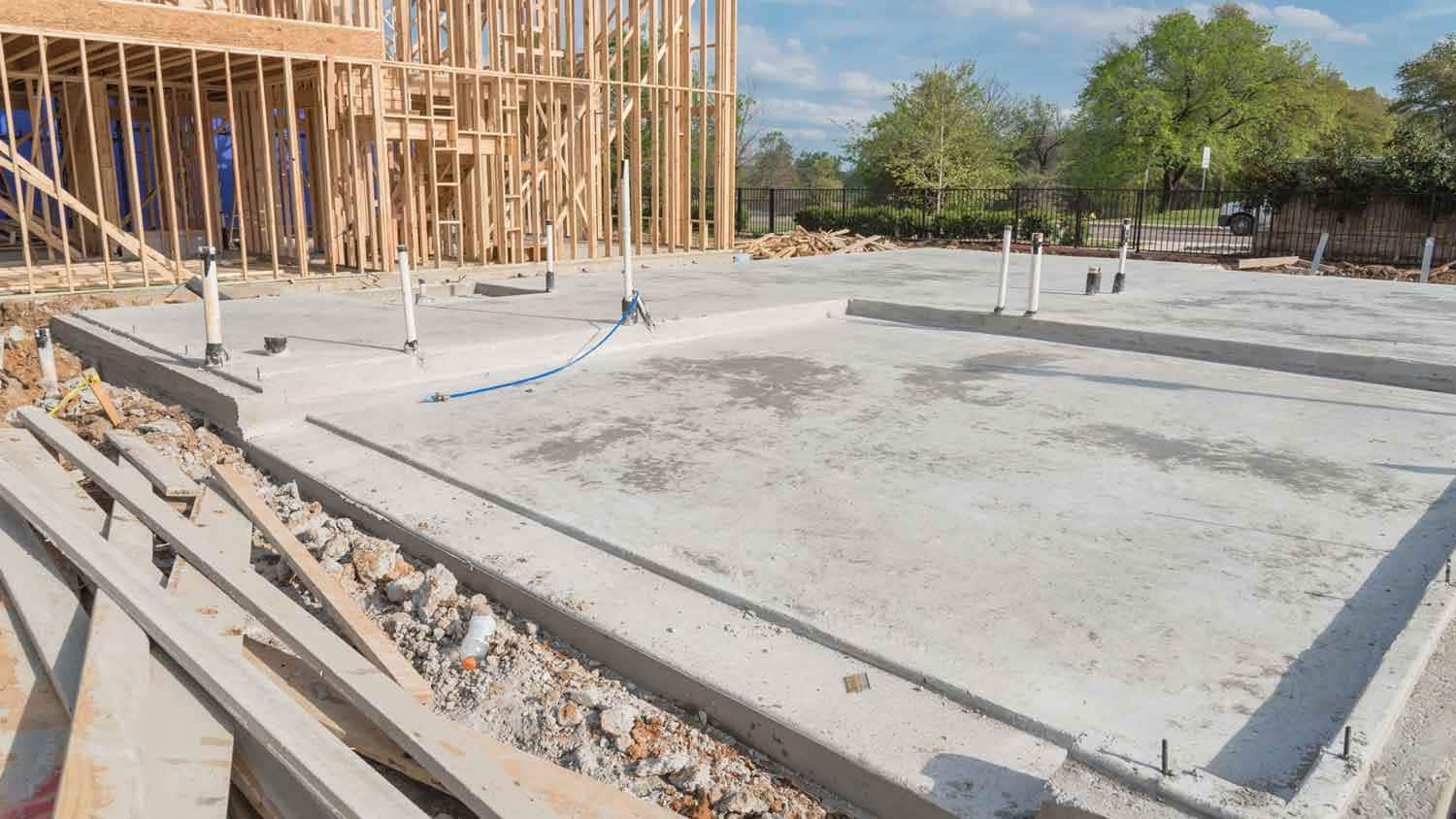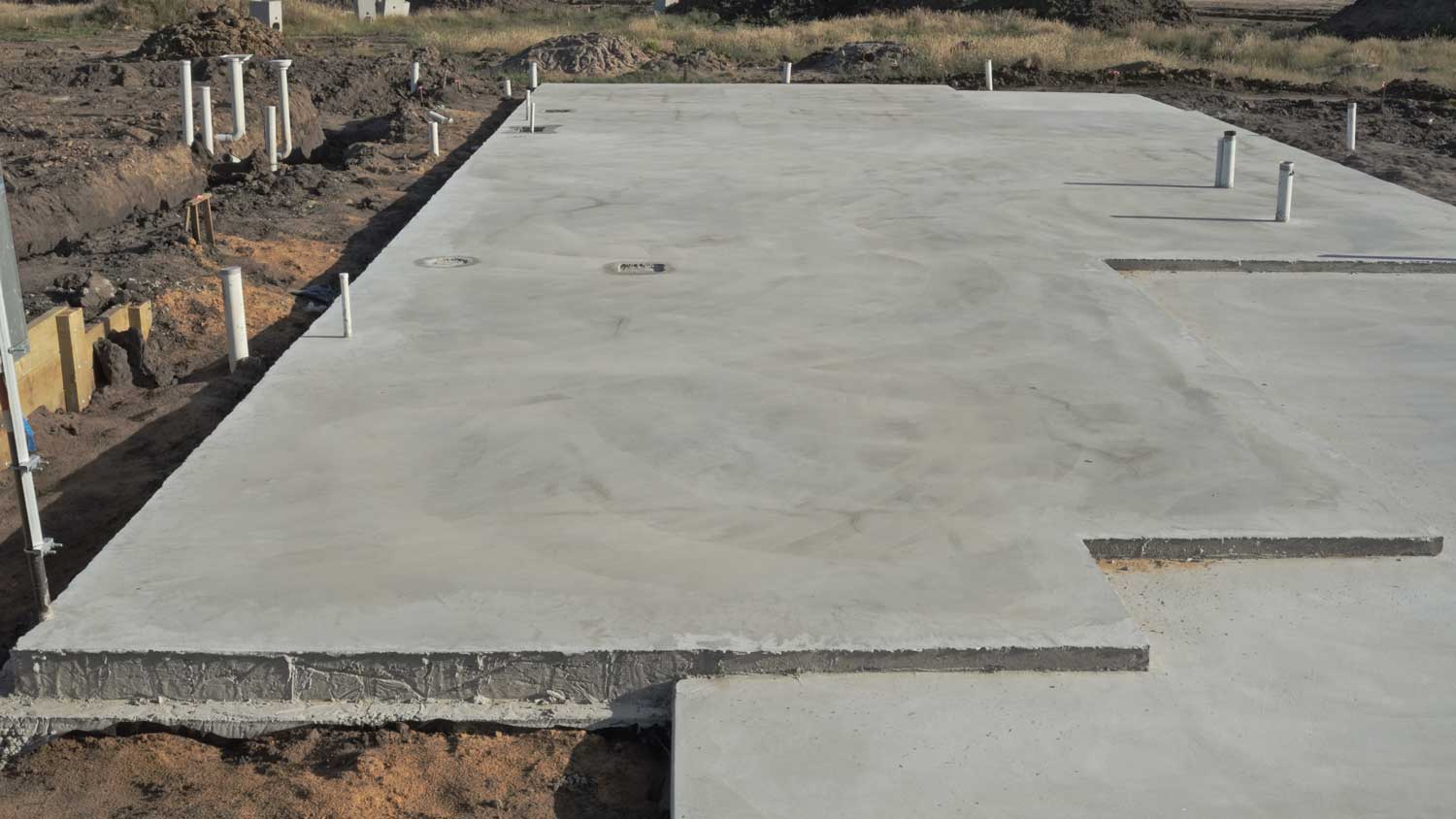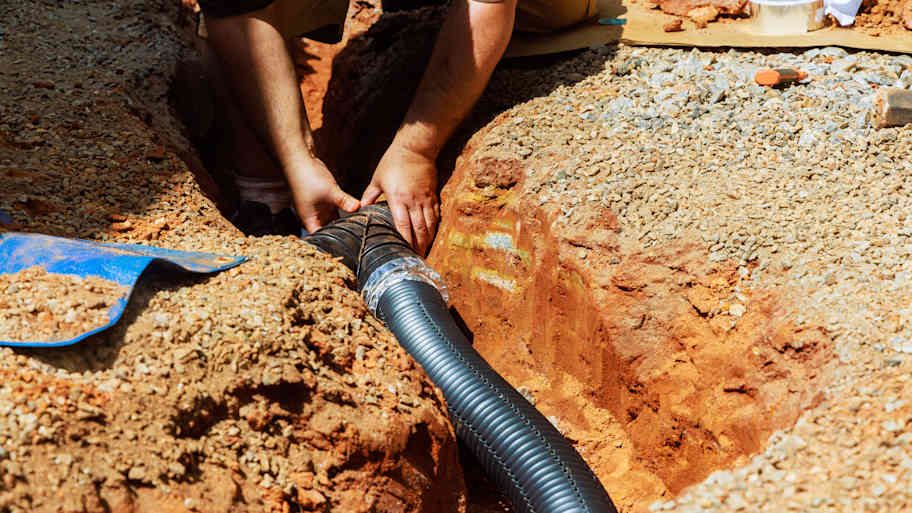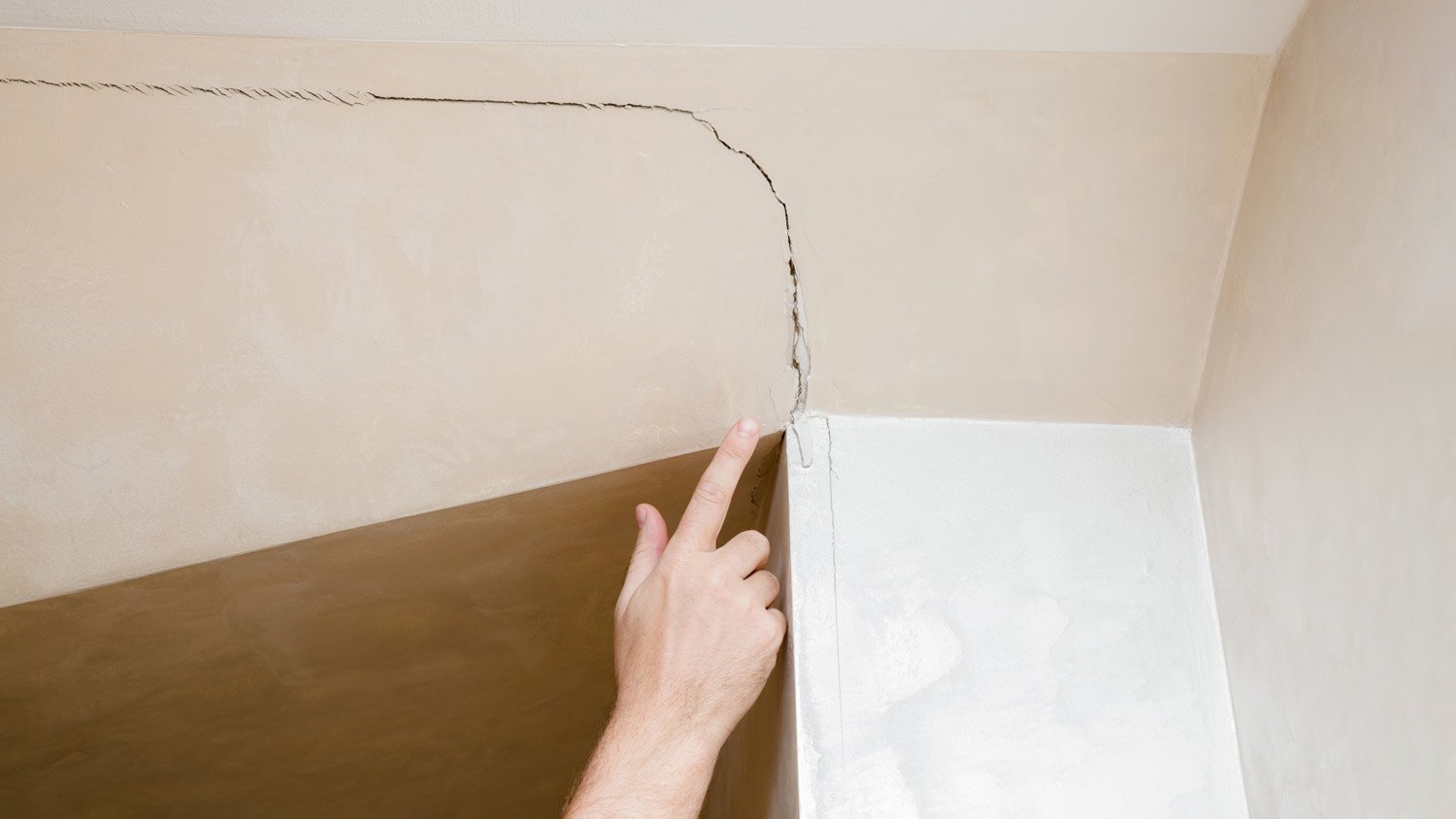
Staying ahead of foundation problems can save you time and effort. Learn how much foundation inspections cost and what affects how much you’ll pay.
Slab foundations are affordable but usually aren’t suitable in colder climates


Slab foundations are the most affordable foundation options.
Slab-on-grade foundations are the fastest to construct.
Slabs aren’t suitable for construction in particularly cold climates.
There is a decent variety of home foundations available to choose from, and slab-on-grade foundations—commonly just referred to as “slab foundations”—are one of the most popular. They’re the most affordable option, although they aren’t suitable for every type of climate. In this guide, we’ll explain exactly what a slab foundation is, some of the pros and cons of this style, how it compares to other styles, and more.
A slab-on-grade—also called a slab foundation for short or a floating slab foundation—is one that consists of a solid, monolithic slab (single piece) of concrete poured directly onto the soil and on top of which a home or other structure sits. These foundations can consist solely of a slab poured on the soil, or they can include shallow footings that help protect the slab above from shifting during colder weather. Whether a contractor chooses a standard slab foundation vs. footings for the slab depends on the soil type and the climate.
Slab foundations require minimal—if any—excavation of the existing land, which means they’re one of the most affordable options when it comes to home foundations.
The average cost to pour a new slab foundation is around $6 per square foot, and your price will usually fall between $4 and $8 per square foot. For a standard home with a 1,000-square-foot footprint, the total slab installation cost would sit at around $6,000.
Installing a slab foundation requires minimal if any excavation and is the most affordable home foundation option. Compared to the cost of a basement foundation—up to about $25 per square foot—a slab can be about $20,000 less for a 1,000-square-foot home.
A slab foundation is ideal for warm and moderate climates where frost heave isn’t a significant risk. They’re the most affordable option, so foundation contractors usually choose them when they’re appropriate. That’s usually in hotter areas, like the Southern U.S., where crawl spaces and basements aren’t necessary for keeping utility lines and foundation footings below the frost line and protected from the cold.
The primary driving force behind foundation type selection is the climate. Some contractors will spend the extra time and money excavating the soil for a basement in areas where a slab foundation would work to boost the value of the home, but generally speaking, the climate determines the type of foundation. You can always ask a concrete foundation company near you which foundation would be best for your soil and climate.
Slab foundations are also common in areas where the soil isn’t as clay-rich. Clay soil will expand more readily when it gets wet, which can cause damage to crawl space and basement walls.
There are three primary types of slab foundations, each ideal for a different climate.
Traditional slab-on-grade foundations: Standard slab foundations consist solely of a slab of thick concrete poured directly onto prepared soil. These are ideal in warmer climates, where footings to prevent frost heave—upward movement from frozen soil that can damage slabs—aren’t required.
Slab foundations with shallow footings: Slab foundations with shallow footing—sometimes called T-shaped slab foundations—include the same monolithic slab poured on the soil, but they also have footings at the corners of the slab and often around the edges that reach further down into the soil. The footings help avoid damage from frost heave, as they provide stability for the slab even when shallow soil freezes.
Frost-protected slab foundation: Frost-protected slabs include insulating foam polystyrene sheets to protect the slab from frost heave. These foundations also usually feature shallow footings to reduce the risk of damage from freezing soil below the slab.

Slab foundations come with a variety of pros and cons that dictate when and where they’re suitable to use for home construction.
Slab-on-grade foundations aren’t always right for every home, but they do come with a fair few benefits.
Fastest style to construct
Low risk of moisture issues
Low risk of pest infestation
Most affordable foundation style
Minimal maintenance requirements
Slab-on-grade foundations can be great for your home, but they do have some drawbacks to consider.
No space for storage or additional living space
Not suitable for colder climates
Pipes run through the concrete, making repairs challenging
Repairs are usually quite expensive
Like any other type of home foundation, slab-on-grade foundations come with their fair share of issues.
Frost heave. Frost heave is when the soil beneath your foundation freezes, and the expansion causes upward pressure on the underside of the concrete. Frost heave is usually only an issue with slab foundations since other styles get support from soil further down that doesn’t freeze as readily. Homes in colder climates use crawl space or basement foundations to avoid this issue. Frost heave can lead to structural damage in your home, which can be costly to repair.
Cracking at the corners and edges. The corners and edges of a slab foundation are particularly prone to cracking and sinking, as the soil directly around your home will see moisture fluctuations that can cause rapid expansion and contracting. In most cases, rainwater and runoff would penetrate deep enough for the edges of a crawl space or basement foundation to experience rapid fluctuations in moisture content.
Pipe issues inside the slab. In many slab foundations, home builders will run plumbing pipes through the concrete slab to avoid having to run them behind the walls, ultimately using less material. This is a great solution, but if the pipes ever burst—from earthquakes, frost heave, structural damage, or old age—then the slab leak repairs will usually be more expensive than if you had a different foundation style without embedded pipes.
Slab foundations are some of the easiest to construct and most affordable foundation styles, but they’re easily outshined by crawl spaces, pier-and-beam foundations, and basements in some situations.
Slab Foundations
Fast and easy to build
Ideal in warm and moderate climates
Require minimal ground preparation
Repairs can be expensive
Pier and Beam Foundations
Affordable
Ideal for areas prone to flooding
Minimal ground preparation required
Moisture is a big problem
Crawl space Foundations
Can provide additional room for storage
Offers space for utilities
Fairly expensive to build
Prone to moisture build-up and pest infestation
Basement Foundations
Can provide additional living space or room for storage
Ideal for very cold climates
Most expensive foundation style
Prone to moisture build-up and pest infestation
From average costs to expert advice, get all the answers you need to get your job done.

Staying ahead of foundation problems can save you time and effort. Learn how much foundation inspections cost and what affects how much you’ll pay.

Foundation repair costs can be tricky when you have a large repair on your hands. This guide walks through costs from small cracks to total replacement.

Whether trying to protect it or transport it, raising a house is no small feat. Read on to find out everything you need to know about the cost to raise a house.

Wondering what weeping tile is? With the unique and somewhat confusing name, you’re not alone. Learn more about weeping tile drainage systems in this guide.

Some cracks in your drywall are harmless, while others require attention. Learn if cracks in your drywall indicate foundation problems and what steps to take.

A house’s history of foundation repairs doesn’t always mean you shouldn’t buy it. Learn what to consider when purchasing a house with an unstable past.